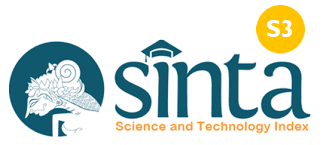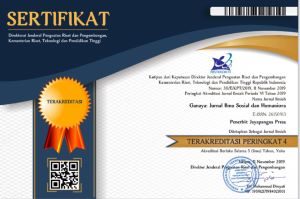Memperkuat Pemahaman Tri Hita Karana Melalui Upacara Ngaturang Cicipan
Perspektif Etnopedagogik
DOI:
https://doi.org/10.37329/cetta.v6i4.2764Keywords:
Etnopedagogik, Tri Hita Karana, Ngaturang Cicipan CeremonyAbstract
This research aims to gain a deeper understanding of the Tri Hita Karana concept through the utilization of an ethnopedagogical approach within the Ngaturang Cicipan Ceremony, a traditional cultural ritual conducted by the community of Dusun Rincung in the village of Banyu Urip, Gerung District, West Lombok Regency, West Nusa Tenggara Province. The Tri Hita Karana concept, which encompasses the balance of human relationships with the divine, fellow humans, and nature, holds profound significance in the local culture and has the potential to enrich environmental and spiritual perspectives. This study employs an ethnopedagogical approach to integrate the elements of Tri Hita Karana into the Ngaturang Cicipan Ceremony with the objective of enhancing community understanding and awareness of Tri Hita Karana values. The research methodology involves qualitative data collection through participatory observation, interviews, and content analysis. The findings reveal that the implementation of ethnopedagogy in the Ngaturang Cicipan Ceremony successfully reinforces the community's comprehension and appreciation of the Tri Hita Karana concept. Active participation in the ceremony enriched with Tri Hita Karana elements has helped elevate environmental consciousness, social values, and spiritual aspects in the daily lives of the community. This research contributes to our understanding of how an ethnopedagogical approach can be used to deepen cultural values and philosophy in the context of traditional cultural practices. These findings also underscore the significance of local culture in comprehending and addressing environmental challenges and enhancing the quality of life for the community. The implications of this research can serve as a foundation for developing more contextual and sustainable educational programs that promote harmony among humans, nature, and spirituality.
References
Banks, J. A. (2004). Multicultural education: Historical development, dimensions, and practice. Teachers College Record, 106(3), 482-497.
Banks, J. A. (2013). An introduction to multicultural education. Pearson.
Darling-Hammond, L., Flook, L., Cook-Harvey, C., Barron, B., & Osher, D. (2020). "Implications for educational practice of the science of learning and development." Applied Developmental Science, 24(2), 97-140.
Ekaningtyas, N. L. D., Yasa, I. M. A., Swari, N. N. S. W., Utari, N. M. D., & Putri, N. P. W. (2023). Aplikasi Psikologi Komunikasi dalam Menstimulasi Moderasi Beragama pada Anak Usia Dini. Caraka: Jurnal Pengabdian Kepada Masyarakat, 2(2), 115-125
Elbadiansyah, U. (2014). Interaksionisme Simbolik Dari Era Klasik Hingga Modern. Jakarta: Rajawali Pers.
European Commission. (2018). "Key competences for lifelong learning."
Gay, G. (2002). Preparing for culturally responsive teaching. Journal of Teacher Education, 53(2), 106-116.
Hollins, E. R., & Guzman, M. T. (2005). Research on preparing teachers for diverse populations. In M. Cochran-Smith & K. M. Zeichner (Eds.), Studying teacher education (pp. 433-481). Lawrence Erlbaum Associates.
Ladson-Billings, G. (1994). The dreamkeepers: Successful teachers of African American children. Jossey-Bass.
Lumut, B., & Watulumbang, L. (2019). Nilai-nilai Pendidikan Karakter. 6(September), 6–12. Mantra, I. (1998). Bhagawad Gita Alih Bahasa dan Penjelasan. Penerbit Pemda Tingkat I Bangli. Ramdhani, M. A. (2017). Lingkungan pendidikan dalam implementasi pendidikan karakter. Jurnal Pendidikan UNIGA.
National Education Association. (2019). "Preparing 21st Century Students for a Global Society: An Educator's Guide to the 'Four Cs'."
Nieto, S. (2002). Language, culture, and teaching: Critical perspectives for a new century. Routledge.
Padet, I. W., & Krishna, I. B. W. (2020). Falsafah Hidup Dalam Konsep Kosmologi Tri Hita Karana. Genta Hredaya: Media Informasi Ilmiah Jurusan Brahma Widya STAHN Mpu Kuturan Singaraja, 2(2).
Pang, N. S. (2019). "Teaching and learning in the 21st century: Trends, challenges, and implications." Education Sciences, 9(2), 103.
Parmajaya, I. P. G. (2018). Implementasi konsep Tri Hita Karana dalam perspektif kehidupan global: Berpikir global berperilaku lokal. Purwadita: Jurnal Agama dan Budaya, 2(2), 27-33.
Parmajaya, I. P. G. (2018). Implementasi konsep Tri Hita Karana dalam perspektif kehidupan global: Berpikir global berperilaku lokal. Purwadita: Jurnal Agama dan Budaya, 2(2), 27-33.
Pitana, I. (2010). Tri Hita Karana–the local wisdom of the Balinese in managing development. In Trends and issues in Global Tourism 2010 (pp. 139-150). Berlin, Heidelberg: Springer Berlin Heidelberg.
PURANA, I. M. (2016). Pelaksanaan Tri Hita Karana Dalam Kehidupan Umat Hindu. Widya Accarya, 5(1).
Rudiarta, I. W., Sari, P. P., & Ariani, N. W. (2022). Menangkal Desakralisasi Destinasi Wisata Pura Melalui Revitalisasi Ajaran Pendidikan Agama Hindu. Cultoure: Jurnal Ilmiah Pariwisata Budaya Hindu, 3(1), 50-61.
Sentana, G. D. D. (2017). Penanaman Konsep Tri Kaya Parisudha Dalam Tradisi Mareraosan. Pendidikan Hindu, 4(2), 33–39.
Setiawati, N. A. (2017). Pendidikan Karakter Sebagai Pilar Pembentukan Karakter Bangsa. Seminar Nasional Tahunan Fakultas Ilmu Sosial Universitas Negeri Medan, 1(1), 348– 352.
Subagiasta, I. K. (2007). Etika Agama Hindu. Surabaya: Paramita.
Sudarsana, I. K. (2017). Peningkatan mutu pendidikan agama hindu melalui efektivitas pola interaksi dalam pembelajaran di sekolah. Prociding SEMAYA 2: Seminar Nasiona Agama & Budaya.
Sudharta, T. R. (2002). Ajaran Moral Bhagawad Gita. Surabaya: Paramita.
Suhardhana, K. (2010). Panca Sradha Landasan Dalam Ajaran Agama Hindu. Jakarta: Rajawali Pers.
Surayin, I. A. P. (2002). Bahan dan Bentuk Sesajen. Surabaya: Paramita.
Syaifullah, A. (1982). Pendidikan dan Kebudayaan. Surabaya: Usaha Nasional.
UNESCO. (2015). "Education 2030: Incheon Declaration and Framework for Action
Villegas, A. M., & Lucas, T. (2002). Preparing culturally responsive teachers: Rethinking the curriculum. Journal of Teacher Education, 53(1), 20-32.
Wiana, I. K. (2005). Makna Upacara Yajña Dalam Agama Hindu. Surabaya: Paramita.
Wiana, I. K. (2007). Tri Hita Karana Menurut Konsep Hindu. Surabaya: Paramita.
World Economic Forum. (2016). "The Future of Jobs: Employment, Skills and Workforce Strategy for the Fourth Industrial Revolution
Yasa, I. M. A. (2020). Nilai-Nilai Pendidikan Dalam Budaya Tarung Presean Di Lombok Barat (Perspektif Agama Hindu). Jurnal Penelitian Agama Hindu, 4(1), 34-51.
Yasa, I. M. A. (2020). Upacara Ngaturang Cicipan di Pura Jamintura Desa Banyu Urip (Perspektif Pendidikan Agama Hindu). Kamaya: Jurnal Ilmu Agama, 3(2), 120-134.
Yasa, I. M. A. (2022). Ritual Megocek Taluh Pada Upacara Pujawali Pura Maksan Banjar Pajang (Perspektif Agama Hindu). Jurnal Penelitian Agama Hindu, 6(2), 89-105.
Yasa, I. M. A., & Mataram, S. G. P. (2020). Upacara Perang Topatdi Pura Lingsar Kecamatan Lingsar Kabupaten Lombok Barat. Media Bina Ilmiah, 14(9), 3179-3190.
Yasa, I. M. A., & Ratnaya, I. G. (2022). Perspektif Tri Hita Karana Dan Tattwam Asi Pada Aksesibilitas Pimpinan Dengan Moderasi Beragama Sebagai Variabel Intervening. Jurnal Penelitian Agama Hindu, 41-54.
Downloads
Published
How to Cite
Issue
Section
License
Copyright (c) 2023 I Made Ardika Yasa, I Wayan Suastra, Ida Bagus Putu Arnyana

This work is licensed under a Creative Commons Attribution-ShareAlike 4.0 International License.
An author who publishes in the Cetta : Jurnal Ilmu Pendidikan agrees to the following terms:
- Author retains the copyright and grants the journal the right of first publication of the work simultaneously licensed under the Creative Commons Attribution-ShareAlike 4.0 License that allows others to share the work with an acknowledgement of the work's authorship and initial publication in this journal
- Author is able to enter into separate, additional contractual arrangements for the non-exclusive distribution of the journal's published version of the work (e.g., post it to an institutional repository or publish it in a book) with the acknowledgement of its initial publication in this journal.
- Author is permitted and encouraged to post his/her work online (e.g., in institutional repositories or on their website) prior to and during the submission process, as it can lead to productive exchanges, as well as earlier and greater citation of the published work (See The Effect of Open Access).
Read more about the Creative Commons Attribution-ShareAlike 4.0 Licence here: https://creativecommons.org/licenses/by-sa/4.0/.





